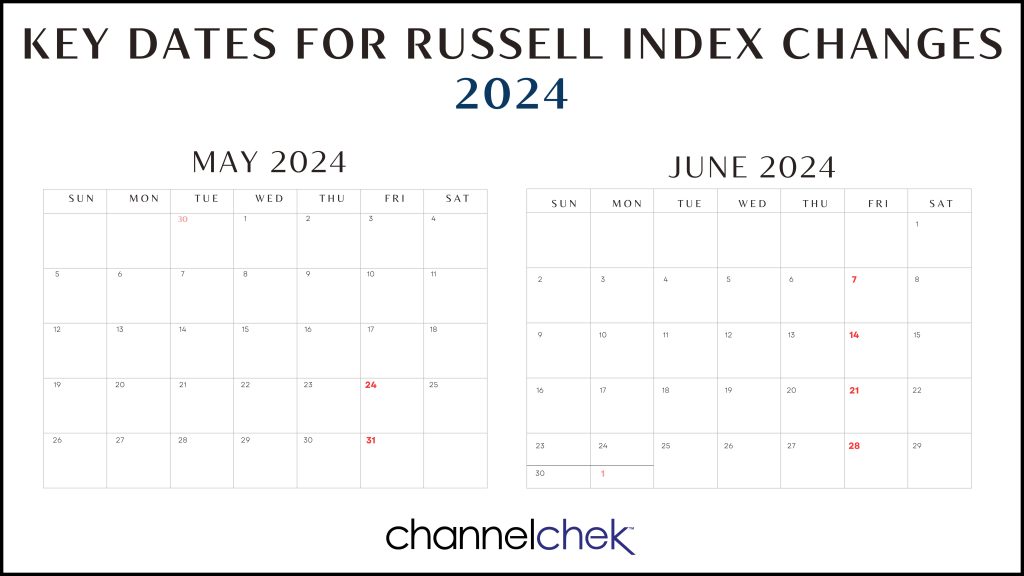Today marks a significant event in the financial world as the annual reconstitution of the Russell indexes takes effect after the market closes. This process, particularly for the Russell 3000 index, is a crucial moment for investors of all experience levels to pay attention to, as it can have far-reaching implications for both individual stocks and the broader market landscape.
The Russell 3000 index, which encompasses the largest 3,000 U.S. stocks by market capitalization, serves as a comprehensive barometer of the U.S. equity market. Its annual rebalancing is a carefully orchestrated event that reflects the evolving dynamics of the market, capturing the rise of emerging companies and the decline of others.
As the closing bell rings today, a new roster of companies will join the Russell 3000, while others will bid farewell. This shift is not merely a technicality but a reflection of changing market realities. Companies that have grown in value over the past year may find themselves newly included, signaling their ascent in the business world. Conversely, those that have fallen out of favor or experienced significant market cap declines may be removed, highlighting the cyclical nature of market success.
For investors, both novice and seasoned, this reconstitution presents a unique opportunity to gain insights into market trends and potential investment prospects. The companies being added to the index often represent growth stories or emerging sectors that are gaining traction. By paying close attention to these additions, investors can identify potential up-and-coming stars in the market before they become household names.
This year’s reconstitution has seen some notable changes, with several companies making their debut on the Russell 3000. Among the newcomers are Graham Corp(GHM), Lifeway Foods (LWAY), and Ocugen (OCGN), DLH Holdings Corp (DLHC), and NN Inc (NNBR). These additions reflect the dynamic nature of the market and highlight emerging trends across different sectors.
The inclusion of these companies in the Russell 3000 index is likely to bring significant benefits. For Graham Corporation, a company specializing in critical equipment for the defense, energy, and chemical industries, this recognition could attract more investor attention to the industrial technology sector and its role in key infrastructure. Lifeway Foods, a leading probiotic and fermented food company, may see increased interest in the growing health food sector. Ocugen, a biotechnology company focused on developing gene therapies and vaccines, could draw more eyes to the innovative potential in healthcare and pharmaceutical. DLH Holdings Corp, a provider of technology-enabled business process outsourcing and program management solutions, highlights the growing importance of efficient business services and government contracting. NN Inc, a diversified industrial company producing high-precision components and assemblies, underscores the continued significance of advanced manufacturing in various industries.
The impact of today’s reconstitution extends beyond individual stock picks. Index funds and ETFs that track the Russell 3000 will need to adjust their holdings to reflect the new composition. This rebalancing can lead to increased trading volumes and potential short-term price volatility for the affected stocks. For active traders, this volatility can create opportunities, while for long-term investors, it underscores the importance of understanding the underlying mechanisms that drive market movements.
It’s worth noting that while the Russell 3000 includes smaller companies compared to more famous indexes like the S&P 500, its comprehensive nature makes it a valuable tool for investors looking to gauge the health of the broader U.S. equity market. The index captures approximately 98% of the investable U.S. equity market, making it a more inclusive representation of the economy than narrower large-cap focused indexes.
As the day unfolds, investors would do well to keep an eye on the final list of additions and deletions published by FTSE Russell. This information can provide valuable insights into sector rotations, emerging trends, and potential investment opportunities. Moreover, understanding the methodology behind these changes can help investors make more informed decisions about their portfolios.
In conclusion, today’s Russell 3000 reconstitution is more than just a reshuffling of an index. It’s a snapshot of the current state of the U.S. equity market and a glimpse into its future direction. For investors of all levels, from novices just starting their journey to experienced market veterans, paying attention to these changes can offer valuable insights and potentially lucrative opportunities. As the market closes today and the new index composition takes effect, remember that even in the world of smaller companies, massive value awaits those who know where to look.
For more detailed information about the Russell reconstitution process and its implications, investors can visit the official FTSE Russell website at https://www.lseg.com/en/ftse-russell/russell-reconstitution. This resource provides comprehensive insights into the methodology, timelines, and impacts of the annual reconstitution, helping investors stay informed about this crucial market event.


